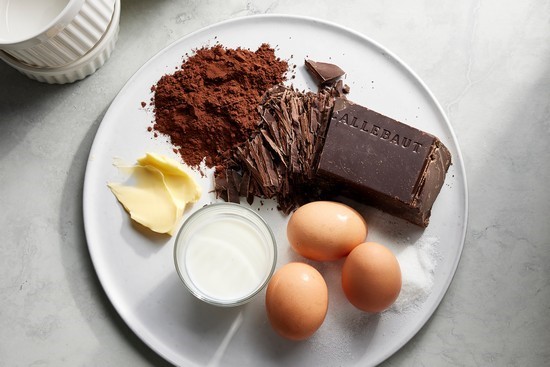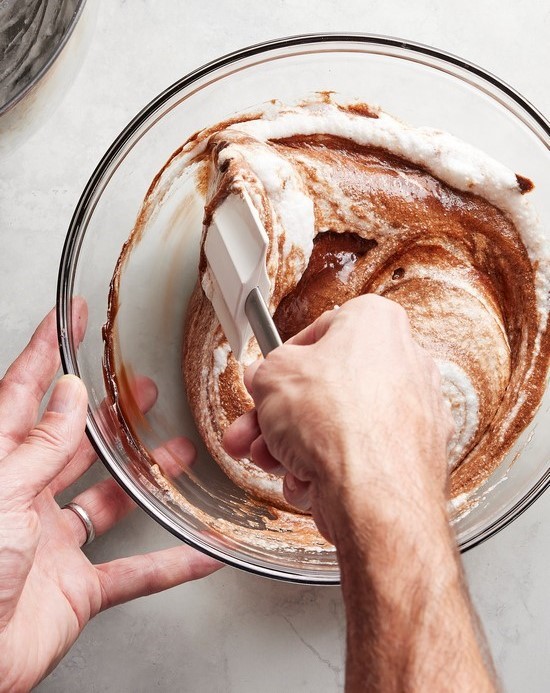When it
comes to making soufflés, there is a lot of fear-mongering: “Don’t overmix the
batter, or they won’t rise.” “Don’t open or slam the oven door, or they’ll
fall.” “Don’t overbake, or they’ll be dry.” “Eat them right away, or they’ll be
ruined!”
اضافة اعلان
All of it could
make a home baker shy away from soufflés, but that would be a shame. Lofty,
voluminous soufflés are one of the most elegant, high-reward desserts, and they
are actually quicker and less complicated than those warnings would have you
believe.
Stabilize your egg
whites
A flavored base lightened with beaten egg whites and baked into a
cloudlike consistency, soufflés require a certain amount of technical
knowledge, starting with an understanding of egg whites.
When egg whites are
whipped, the proteins in them, called albumin, denature (meaning that the bonds
that hold them together break down). These denatured proteins trap air bubbles
and retain water, creating a foam. That foam is then folded into the soufflé
base, and, in the oven, the tiny air bubbles expand from the heat and cause the
batter to rise.
Since egg white
foam is inherently unstable and will start to collapse almost immediately, so
much of soufflé-making revolves around preserving as much air as possible.
For a more stable foam, start with older
eggs —
preferably from the supermarket and not the farmers’ market — as very fresh egg
whites will not whip up as easily. While the eggs are still cold, separate the
whites from their yolks. Cold yolks are less likely to rupture and leave behind
traces of fat in the whites, which will interfere with the formation of the
foam.

Then, let the
whites come to room temperature before whipping them in a very clean bowl. Just
make sure to avoid any plastic bowls, as the plastic can retain fat residue.
Once the whites are
opaque and foamy — waiting until this point helps them achieve their maximum
volume — gradually add the sugar while still beating the whites. This helps
stabilize them and reduces the chance of overbeating. Then, keep whipping them
until they are glossy and form stiff peaks. Any less may leave the whites
droopy and formless, resulting in denser soufflés that collapse quickly, while
any more may produce clumpy whites that are difficult to incorporate, yielding
dry soufflés.
Build a better base
If stiffly beaten egg whites give a soufflé its hallmark lightness, the
flavored base, which is often yolk-enriched, provides structure and support.
Sweet soufflés commonly use pastry cream, and savory ones often employ
béchamel.
While some
chocolate soufflés are gluten-free, relying only on melted chocolate for
structure, this recipe calls for a thin pastry cream thickened with a bit of
flour and flavored with chocolate and
cocoa powder. The gluten from the flour
adds just enough structure to support the soufflés without muting any of the
chocolate flavor. The fat from the yolks, chocolate and milk will speed the
collapse of the egg foam, so fold the batter gently and try to work quickly
once it is assembled.
A technically imperfect chocolate soufflé is still delicious, and your friends and family are unlikely to notice if you under-beat the egg whites or left the soufflés in the oven a minute too long.
Then, pull out your
ramekins. Compared with one larger vessel, they cumulatively offer more surface
area, which leads to more even, consistent cooking.
Ready your ramekins
Because egg white foam is sticky, the ramekins should be thoroughly
greased and coated with sugar to prevent the batter from anchoring to the sides
during baking, which could lead to domed and cracked soufflés. Apply a generous
coating of room-temperature butter all over the vessels, using upward strokes
along the sides to encourage the batter’s rise. Make sure to butter along the
rims as well, as this is where the batter is most likely to stick. A final
dusting of sugar also aids the batter’s rise, as the crystals act like grips.

Taking a few
careful steps during assembly will help produce soufflés with flat tops and
tall, straight sides, making them as impressive-looking as anything you can
order in a fancy
French restaurant. Fill the ramekins completely with batter,
then scrape off any excess with a straightedge for a smooth, level finish.
Ramekins filled to the very top with a well-made batter should double in height
in the oven.
Then, after
sprinkling the tops with sugar, run a finger along the inner rims, wiping away
the batter. This last trick is just one more way to prevent sticking and help
the soufflés rise straight upward. After an initial blast of heat from a hot
oven kick-starts their rise, they cook at a lower temperature to allow time for
the centers to cook before the sides dry out.
Know when you are done
Determining doneness can be tricky, as the window when the batter is
neither undercooked and runny nor overcooked and dry is brief. The best test is
to press the centers of the soufflés gently with a fingertip and feel for a
subtle springiness, an indication that the eggs are barely set. Serve the
soufflés straight from the oven, but know that proper whipping of the egg
whites and the small amount of flour in the base give them good staying power,
so while collapse is inevitable, it is not imminent.
The process of
making soufflés is undoubtedly finicky, but do not let this be a deterrent. A
technically imperfect chocolate soufflé is still delicious, and your friends
and family are unlikely to notice if you under-beat the egg whites or left the
soufflés in the oven a minute too long.
You are not risking much in the way of time or ingredients,
and, though the potential for mistakes may be high, the potential for greatness
is even higher.
Read more Good Food
Jordan News



